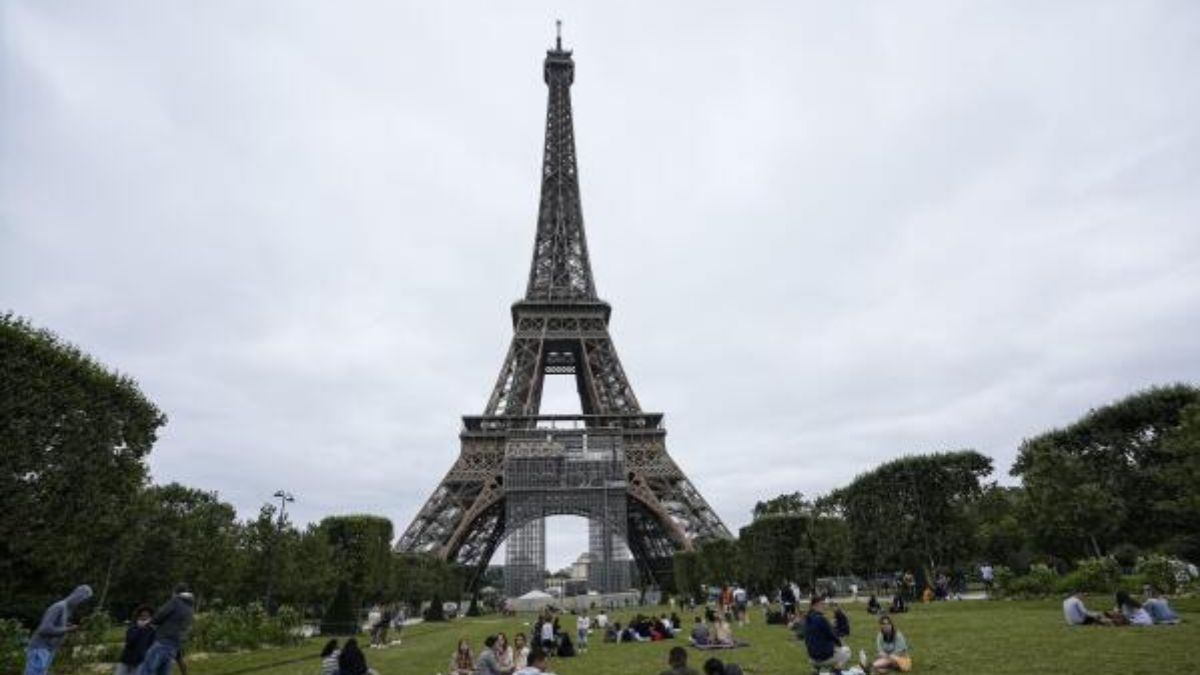The structure known today as the Eiffel Tower was originally dubbed the Tour de 300 mètres, the 300-metre tower. The name was proposed by engineers Maurice Koechlin and Émile Nougier to Gustave Eiffel, who oversaw the tower’s construction. It hinted at the desire to build something extraordinary, a technological feat that would set a new height record.
However, as temperatures rise during the summer months, the Eiffel Tower grows even taller than its original design.
A lightweight iron structure
The Eiffel Tower was erected at the 1889 World’s Fair to commemorate the centenary of the French Revolution.
Eiffel chose puddled iron for its construction, a material he knew well and had used in previous projects with good results. This ferrous material can withstand high levels of stress, which allowed for the construction of a large, very light tower that would be safe from horizontal wind forces.
To give an idea of how light the tower is, its weight of 7,300 tonnes is close to the weight of the volume of air contained within it – around 6,300 tonnes.
The Eiffel Tower was intended to be a prime observation point, as well as a base for radio broadcasting. The tower itself is a gigantic triangular lattice structure, much like the Garabit Viaduct (also designed by Eiffel’s office) and the Forth Bridge in Scotland, both from the same period.
All of these structures grow when the temperature of the material increases. However, unlike bridges, which behave in a more complex manner, the Eiffel Tower experiences mainly vertical growth and shrinkage due to changes in temperature. This phenomenon is known as thermal expansion.
Materials that grow and shrink
We know that most solids expand when the temperature rises and contract when it falls. This is because an increase in temperature causes greater agitation in the atoms, which leads to an increase in the average distance between them.
Depending on the nature of the bond, different kinds of solids experience greater or lesser growth, which engineers have to record with great care. Ceramics and glasses, with stronger bonds, expand less than metals, which in turn expand less than polymers.
So, how can we estimate the amount of movement in a solid? When the elements are straight – as is the case in most public works and architecture, where beams and bars predominate – the movement is proportional to three parameters: the length of the element, the change in its temperature, and the material’s coefficient of expansion.
A hair’s breadth
Many ceramic materials typically have expansion coefficients ranging from 0.5x10⁻⁶ to 1.5x10⁻⁶ (degree Celsius) ⁻¹, while metals range between 5x10⁻⁶ and 30x10⁻⁶ (degree Celsius)⁻¹, and polymers between 50x10⁻⁶ and 300x10⁻⁶ (degree Celsius)⁻¹. These (perhaps strange-looking) numbers indicate the growth of a standard-length unit when the temperature rises by one degree Celsius.
The most expandable materials are polymers, which expand about ten times more than metals, and metals expand ten times more than ceramics.
The puddled iron used in the Eiffel Tower, and its steel components, have a coefficient of around 12x10⁻⁶ (degree Celsius)⁻¹, meaning that a one-metre-long iron bar expands by 12x10⁻⁶ metres when the temperature rises by one degree. That is just a dozen microns, less than the thickness of a human hair.
So does heat have any noticeable effect on buildings? Yes, if we take into account that there are two other parameters to consider: the length of the element and the temperature range where it is located.
The length can be very great. The Eiffel Tower is 300 m high, but the Garabit Viaduct is 565m long, and the Forth Bridge is over 2.5km long. Today, there are many larger linear structures, and thermal expansion also affects the railway tracks that many bridges are built to carry.
Historical temperature ranges must also be analysed. Paris has been recording temperatures for more than two centuries, with winter minimums below -20 degrees Celsius and summer maximums of around 40 degrees Celsius. We should also take into account the effect of solar radiation – metals can reach much higher temperatures in direct sunlight, often exceeding 60 degrees Celsius or 70 degrees Celsius.
Leaning away from the sun
Now, let’s do the maths. We’ll estimate how much a simple 100-metre-long metal bar expands when the temperature fluctuates by 100 degrees Celsius – the approximate range experienced by the Eiffel Tower.
The calculation is simple. If a one-metre bar expands by 0.000012 metres when the temperature rises by one degree, a 100-metre bar expands by 0.12 metres when the temperature rises by 100 degrees. And a 300-metre bar would expand three times as much: 0.36 metres. That is, 36 cm. This is a noticeable difference.
Clearly, a simple bar does not behave the same as a tower made of more than 18,000 pieces of riveted iron oriented in all directions. Furthermore, the sun always shines on one of its sides. This means one of its faces grows more than the others, causing a slight curve in the tower, as if it were leaning away from the sun.
Specialists have estimated that the Eiffel Tower actually grows between 12 and 15 centimetres when comparing its size on cold winter days with the hottest days of summer. This means that, in addition to being a landmark, a communications tower and a symbol of Paris itself, the Eiffel Tower is also, in effect, a giant thermometer.
Federico de Isidro Gordejuela, Profesor adjunto de Construcciones Arquitectónicas, Universidad CEU San Pablo
This article is republished from The Conversation under a Creative Commons license. Read the original article.


)

)
)
)
)
)
)
)
)



